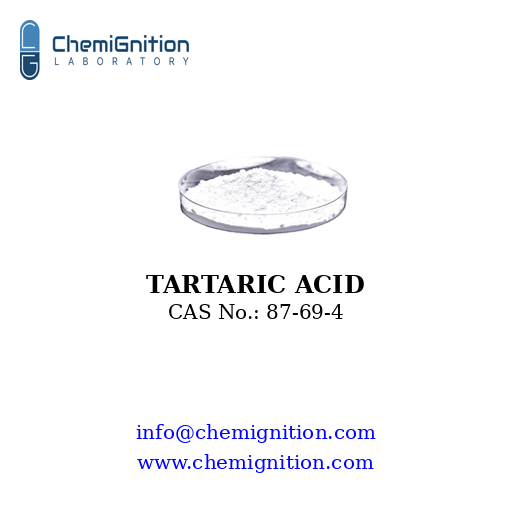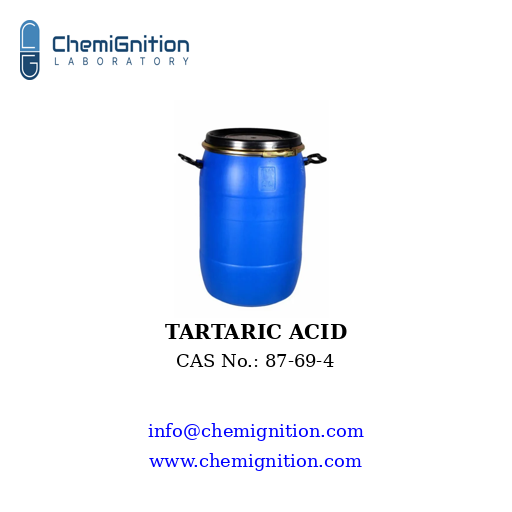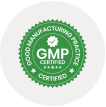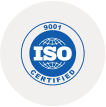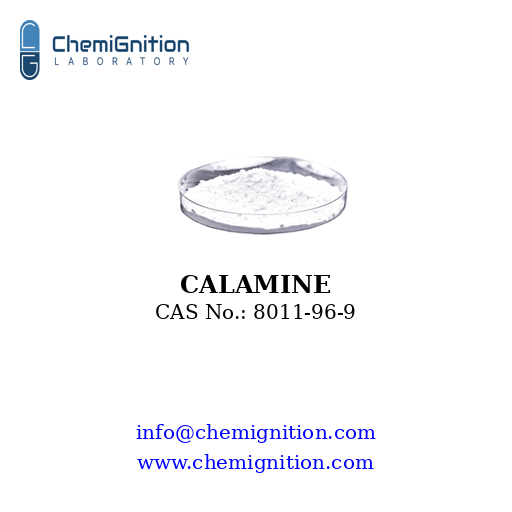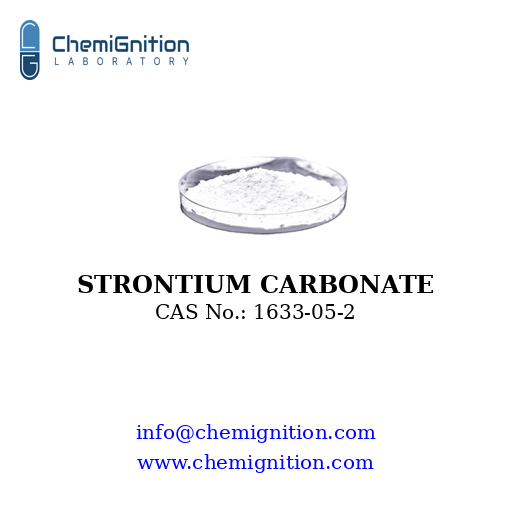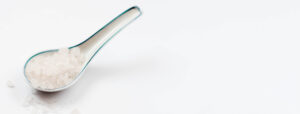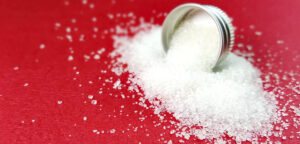Key Properties of Tartaric Acid
| Product Name: | Tartaric Acid |
| Synonyms: | 2,3-Dihydroxybutanedioic Acid |
| CAS No: | 87-69-4 |
| Chemical Formula: | C₄H₆O₆ |
| Grade: | IP / BP / USP |
| Appearance: | White, crystalline powder |
| Molar Mass: | 150.09 g/mol |
| Solubility: | Soluble in water, slightly soluble in alcohol |
| Melting Point: | 170°C – 172°C |
Manufacturing process of Tartaric Acid
Step 1: Raw Material Selection
Source Selection – Tartaric acid is obtained from natural sources like grape residues (wine lees), tamarind, or chemically synthesized.
Quality Check – Raw materials are tested for purity and suitability before processing.
Step 2: Extraction & Conversion
Crude Calcium Tartrate Formation – Wine lees or grape residues are treated with calcium hydroxide (Ca(OH)₂) to form calcium tartrate precipitate.
Filtration – The solid calcium tartrate is separated from the liquid mixture using filtration.
Step 3: Acidification & Tartaric Acid Formation
Treatment with Sulfuric Acid (H₂SO₄) – The filtered calcium tartrate is then treated with sulfuric acid, which releases tartaric acid and forms calcium sulfate (gypsum) as a byproduct.
Separation of Calcium Sulfate – The gypsum is removed via filtration, leaving behind a crude tartaric acid solution.
Step 4: Purification & Concentration
Decolorization – The crude solution is treated with activated carbon to remove impurities and colorants.
Evaporation & Crystallization – The purified solution is concentrated using evaporation, allowing tartaric acid to crystallize.
Cooling & Filtration – The solution is cooled to promote crystal formation, and the crystals are filtered out.
Step 5: Drying & Milling
Drying – The filtered tartaric acid crystals are dried in a vacuum dryer to remove residual moisture.
Milling & Sieving – The dried tartaric acid is milled and sieved to obtain the desired particle size.
Step 6: Quality Control & Packaging
Final Testing – The finished tartaric acid undergoes assay, purity, pH, solubility, and heavy metal analysis as per IP/BP/USP specifications.
Packaging – The final product is packed in HDPE drums or bags with inner polythene liners to prevent contamination.
Storage – Stored in a cool, dry place away from moisture to maintain stability.
Applications of Tartaric Acid
Technical Specifications of Tartaric Acid
| Sr. No. | Test | Specification |
|---|---|---|
| 1 | Description | White, crystalline powder |
| 2 | Assay (Purity) | 99.0% – 101.0% |
| 3 | pH (1% solution) | 2.0 – 3.0 |
| 4 | Solubility | Soluble in water, slightly soluble in alcohol |
| 5 | Heavy Metals | Not more than 10 ppm |
| 6 | Loss on Drying | Not more than 0.5% |
| 7 | Residue on Ignition | Not more than 0.1% |
Packing and Storage condition of Tartaric Acid
Packing:
- Packed in airtight HDPE drums or polyethylene-lined fiber drums to prevent moisture absorption.
- Available in 25 kg or 50 kg bags with inner double-layer polyethylene liners.
- Custom packaging options available as per customer requirements.
Storage Conditions:
- Store in a cool, dry, and well-ventilated area away from moisture.
- Keep away from direct sunlight, heat sources, and incompatible materials such as strong oxidizing agents.
- Recommended storage temperature: Below 30°C.
- Ensure the container is tightly closed when not in use to prevent contamination and degradation.
MSDS - Tartaric Acid
Why Choose Chemignition for
Tartaric Acid Supply?
Quality Assurance
Grade Compliance
Tartaric Acid is manufactured in adherence to stringent global pharmaceutical standards.
In-House Quality Control
Each batch undergoes rigorous testing for purity, stability, and efficacy.
Regulatory Approvals
Certified for export and compliant with international regulatory requirements.
Large-Scale Manufacturing and Export
Grade Compliance
Tartaric Acid is manufactured in adherence to stringent global pharmaceutical standards.
In-House Quality Control
Each batch undergoes rigorous testing for purity, stability, and efficacy.
Regulatory Approvals
Certified for export and compliant with international regulatory requirements.

